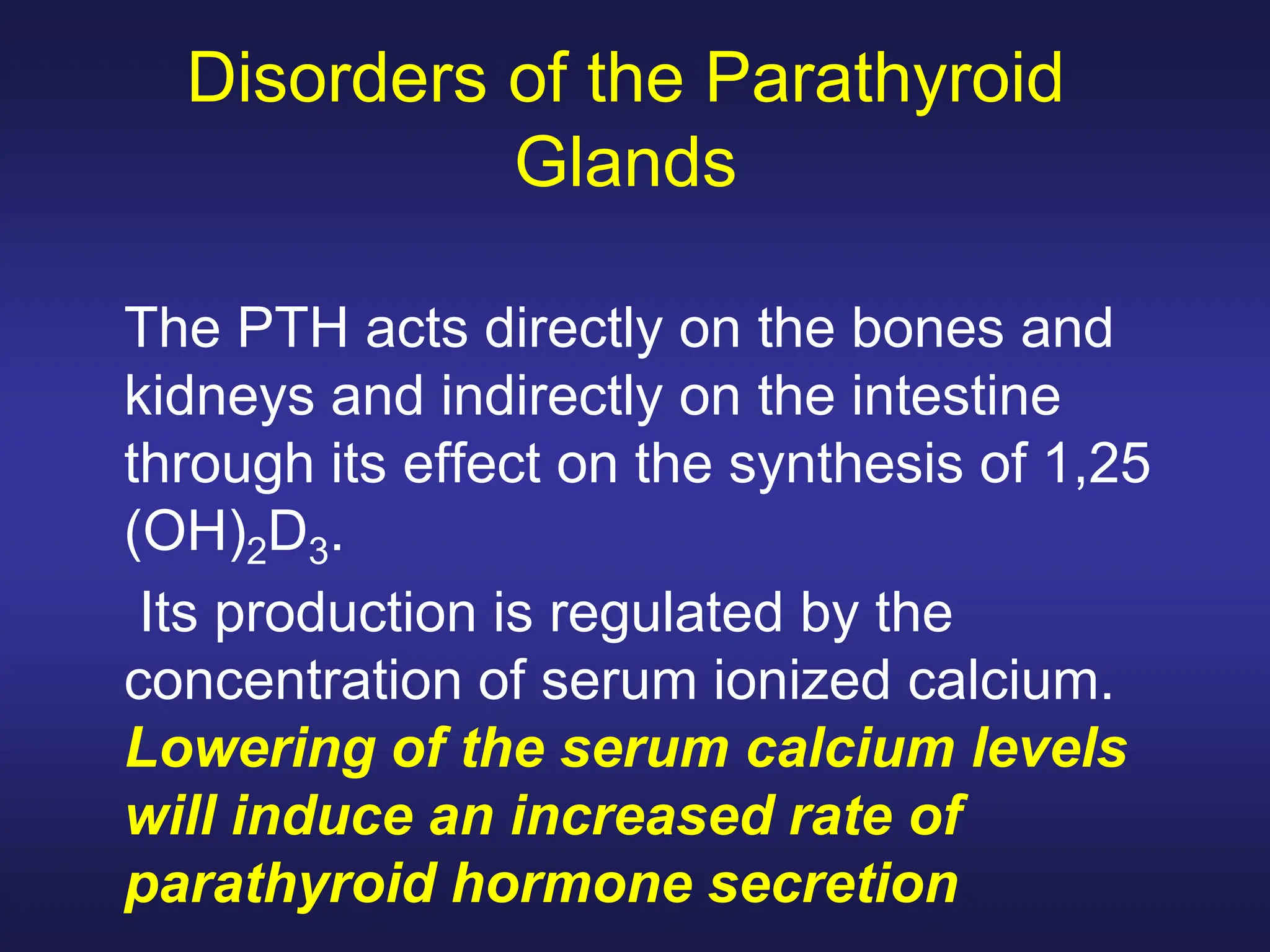The document discusses disorders of the parathyroid glands, which regulate calcium, phosphate, and magnesium levels. It covers primary hyperparathyroidism, caused by excessive PTH from hyperfunctioning parathyroid glands, and secondary hyperparathyroidism, which is an adaptive response to low calcium levels. It also discusses hypoparathyroidism, caused by PTH deficiency, and the resulting hypocalcemia and its neuromuscular symptoms. Diagnosis and treatment options are provided for each disorder.

















































































